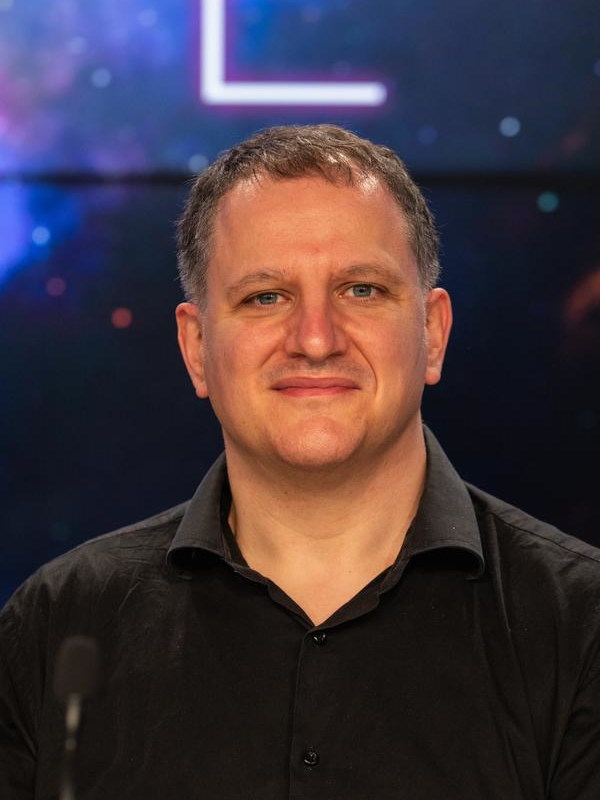By Rick Smith
When Italian researcher Luca Baldini stepped down as analysis coordinator for NASA’s Fermi Gamma Ray Space Telescope in 2016 to help develop IXPE, the Imaging X-ray Polarimetry Explorer, colleagues presented him with a flamethrowing guitar. It was a spot-on gift for a musician and scientist who, in his spare time, crafts his own guitars and other stringed instruments.
Not that Baldini, the Italian co-principal investigator for IXPE, has a lot of time to spare nowadays. The IXPE mission represents the culmination of X-ray polarimetry gas pixel detector research and development he has helped to pioneer since 2001.

“I’m an experimentalist, not an astronomer,” said Baldini, an associate professor of physics at the University of Pisa in Italy and a researcher at the National Institute of Nuclear Physics in Rome. “My passion is hardware and software development, so I tend to find the study of extended X-ray sources the most challenging: supernova remnants such as Tycho and Cassiopeia A, the Crab Nebula, even the galactic center.
“From the standpoint of analysis, these are the most interesting targets of study to me, because we’re using IXPE’s detector to its full potential, taking full measure of the sky to infer the properties and physics of each source,” he added.
On IXPE, Baldini was a key developer of the imager’s sophisticated detector and data acquisition system, event reconstruction software, and “Monte Carlo” simulator.
Named for the French city, a Monte Carlo simulator generates random numbers for modeling stochastic events in space – those possessing a wildly unpredictable pattern of behavior that can be analyzed statistically but never precisely forecasted, much like dice thrown or roulette wheels spun in the city famous for its casinos. And they’re critical to an astrophysics mission before the payload ever leaves the ground.
“Monte Carlo simulations are very important in the initial design of any experiment – how sensitive the detector should be, how large its field of view, what types of readouts are sought,” Baldini said. “You run the sims, optimize the detector’s requirements, and build the best hardware possible. As new data is fed into the simulator from the instrument in flight, the resulting models get better and better.”
Since 2002, Baldini also has been an integral part of the team responsible for the Large Area Telescope, the principal science instrument on NASA’s Fermi Telescope, which was launched to space in 2008 to study high-energy gamma ray emitters: pulsars, binary stars, supernova remnants, active galactic nuclei and more.
He contributed to the telescope’s development and operation, including construction of its sophisticated silicon tracker, ongoing monitoring of the instrument’s performance in orbit, and scientific analysis of the data it gathers, pursuing answers to key questions about physics, high-energy cosmic rays, and dark matter.
Baldini and the Italian team assembled the Large Area Telescope’s silicon tracker and other elements in the same laboratories where they would later build the detectors for IXPE. Testing was meticulous; the team conducted individual trials on each of the tracker’s approximately 10,000 distinct silicon strip detectors before final assembly.
Mid-scale science missions such as Fermi can be challenging, he said, but small missions such as IXPE present their own unique hurdles to overcome.

“On Fermi, we had a bigger budget and longer development time, and given the complexity of the instruments, our agency leads were more amenable to schedule delays,” he said. “We had just three years to deliver IXPE, so we had to find solutions to challenges that upheld the schedule. Our team was very proud, on both sides of the ocean, when we met our goals.”
Baldini, who also chairs IXPE’s Science Analysis and Simulation Working Group, holds a 2001 master’s degree in physics and a 2005 doctorate in applied physics, both from the University of Pisa. He met his wife, fellow IXPE and Fermi researcher Melissa Pesce-Rollins, as postgraduate doctoral students; they married in 2006. “We have offices next to each other and haven’t killed each other yet, so that’s nice,” he chuckled.
With IXPE now in its second year of successful space research, Baldini is already pondering what’s next. His team is supporting a planned Chinese-European mission called the enhanced X-ray Timing and Polarimetry mission (eXTP), designed to study magnetars, neutron stars, supermassive black holes, and other extreme conditions of density, gravity, and magnetism.
But after developing gamma ray and X-ray imaging software and technology for the last 15 years or more, he’s open to all the possibilities of the cosmos.
“I wouldn’t mind changing course completely, pursuing something with more immediate utility for society,” he said. “I like change – different people, different communities, different challenges.”
The cosmos awaits him.
Jonathan Deal
NASA’s Marshall Space Flight Center
256-544-0034
jonathan.e.deal@nasa.gov
